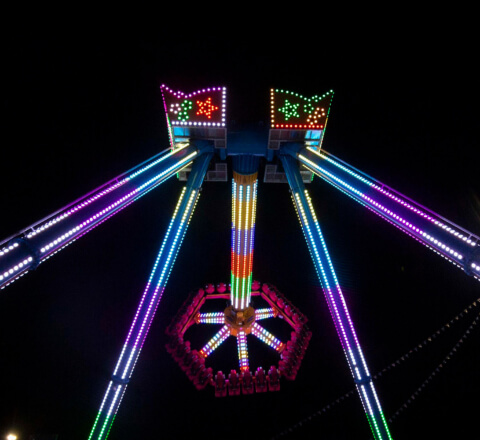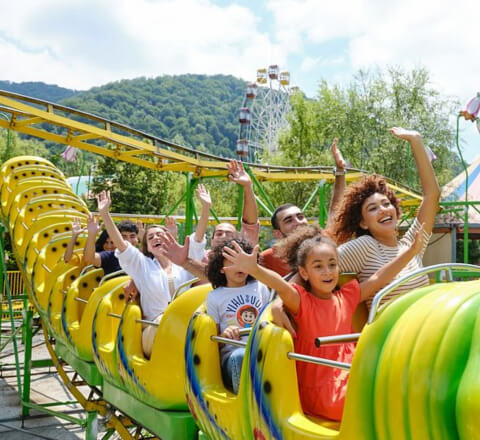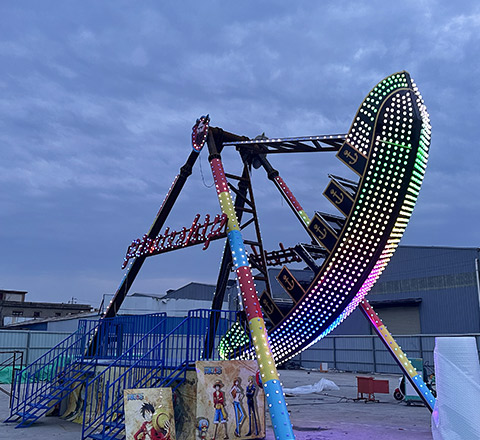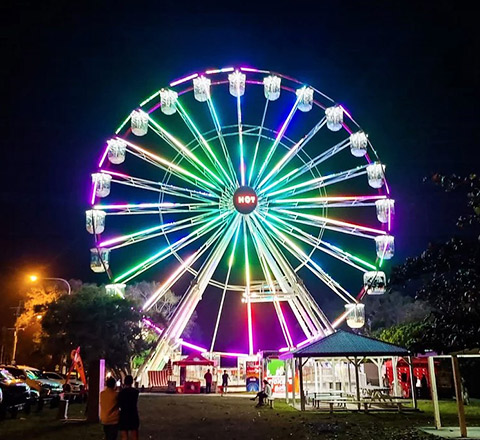Among all types of amusement rides, roller coasters remain the signature attractions of theme parks. The debate of Wooden Roller Coaster vs Steel Roller Coaster goes beyond personal taste—while wooden coasters bring a nostalgic, rattling charm, steel coasters deliver smooth precision and bold designs.
In this guide, we compare their physical characteristics, ride experience, and maintenance requirements, helping you understand which option fits best for parks and riders alike.
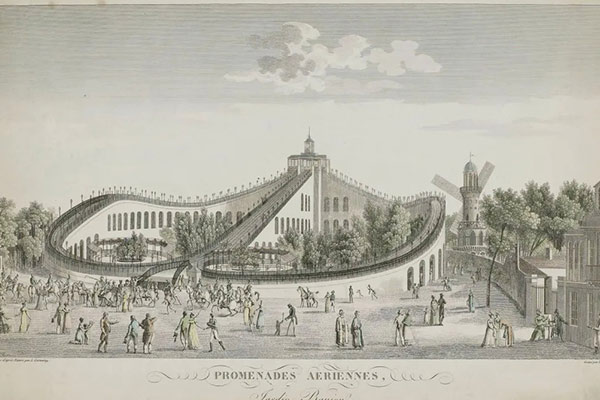
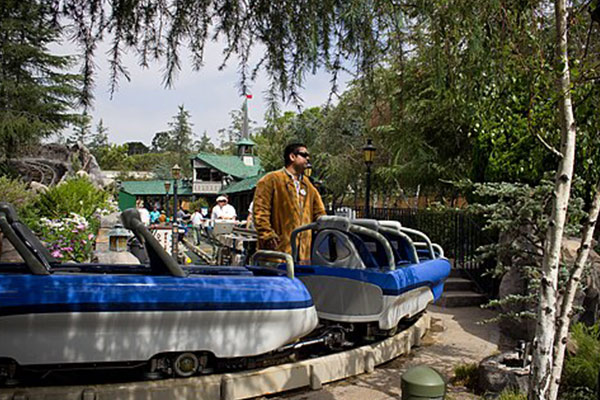
History and Origins
The world’s first true modern roller coaster, the Promenades Aériennes in Paris (1817), was made of wood. For decades, wooden tracks defined thrill rides.
Steel coasters came much later, with the first—Disneyland’s Matterhorn Bobsleds—opening in 1959. Since then, steel technology has dominated, bringing higher speeds, smoother rides, and more daring track designs.
Physical Characteristics
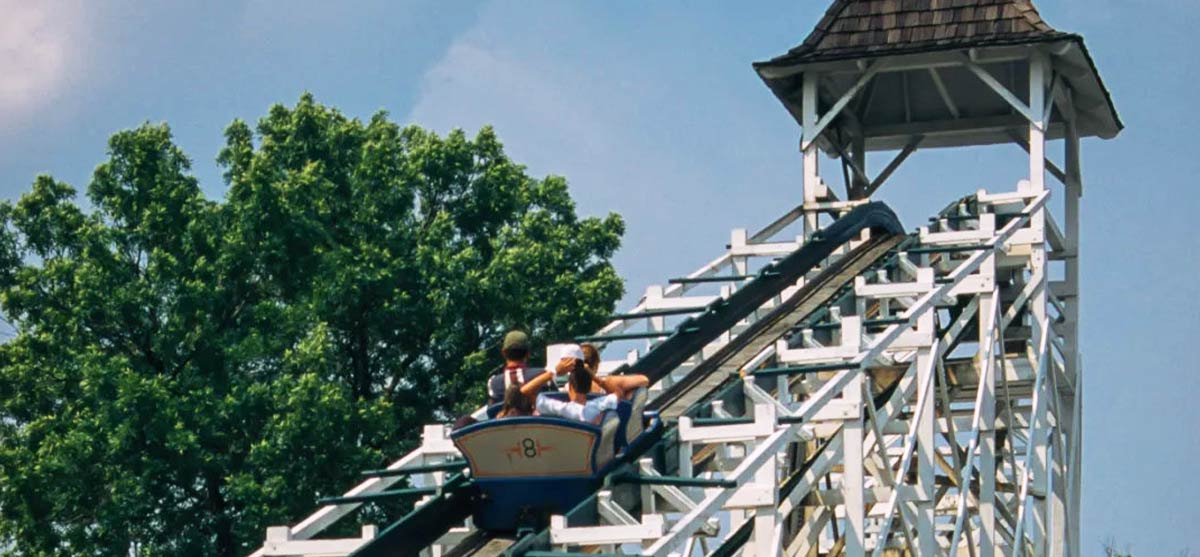
- Wooden Roller Coasters
Built with massive timber support structures, they have limited flexibility in track layouts. Elements like vertical loops are nearly impossible. Heights and speeds are generally lower.- Example: Lightning Rod at Dollywood, the world’s first launched wooden coaster, reaches 117 km/h—fast, but less than half the speed of today’s steel giants.
- Steel Roller Coasters
Supported by sleek steel columns, they allow extreme track elements such as corkscrews, barrel rolls, and near-vertical drops. They also reach record-breaking speeds.- Example: Formula Rossa at Ferrari World in Abu Dhabi hits 240 km/h in just 5 seconds, making it the fastest coaster on earth.

Ride Experience
- Wooden Coasters
Known for their “rough and rattling” feel, wooden rides vibrate, shake, and roar. This noise and movement actually enhance the sense of speed and intensity without requiring extreme height or velocity.- Example: Texas Stingray at SeaWorld San Antonio—Texas’s longest, tallest, and fastest wooden coaster—features an 89 km/h top speed, an 80-degree banked turn, and a 30-metre tunnel.
- Steel Coasters
Deliver smooth, precise, and high-thrill experiences. With advanced engineering, they feature inversions, zero-gravity rolls, and near-vertical drops that wooden coasters simply can’t replicate.- Example: Jersey Devil at Six Flags Great Adventure offers a 39-metre high track, 87-degree drop, and multiple zero-gravity rolls on a single-rail design.
Maintenance and Operations
Daily roller coaster maintenance is essential, and it’s also where the biggest differences between wooden roller coasters and steel roller coasters can be seen.
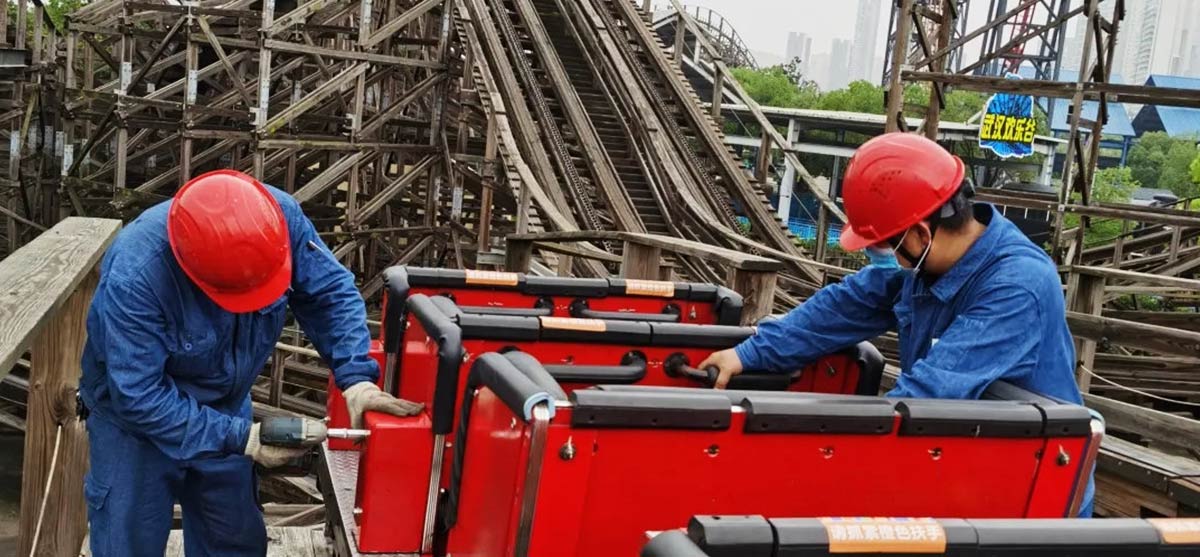
- Wood roller coaster maintenance requires constant inspections, bolt tightening, and frequent wood replacement. These structures are more vulnerable to weather, warping, and wear, making maintenance labour-intensive. However, with proper care, their service life can extend to 70–80 years.
Example: Leap the Dips at Lakemont Park, built in 1902, is still operational after more than a century.- Example: Leap the Dips at Lakemont Park, built in 1902, is still operational after more than a century.
- Steel Roller Coaster maintenance requires less daily intervention but relies heavily on advanced non-destructive testing (NDT), regular repainting, and corrosion protection. With proper upkeep, their lifespan is typically 20–40 years.
👉 For a full overview of upkeep, see our Roller Coaster Maintenance Guide.
Cost Considerations
- Wooden Roller Coasters
Lower initial cost, but higher lifetime maintenance. Wood naturally degrades, requiring frequent retracking and replacement. Labour costs add up quickly. - Steel Roller Coasters
Higher upfront investment but lower daily maintenance. Their modular design makes installation smoother, and long-term upkeep is more predictable.
For buyers exploring investment options, see our Roller Coaster for Sale page for guidance on both cost and lifecycle planning.
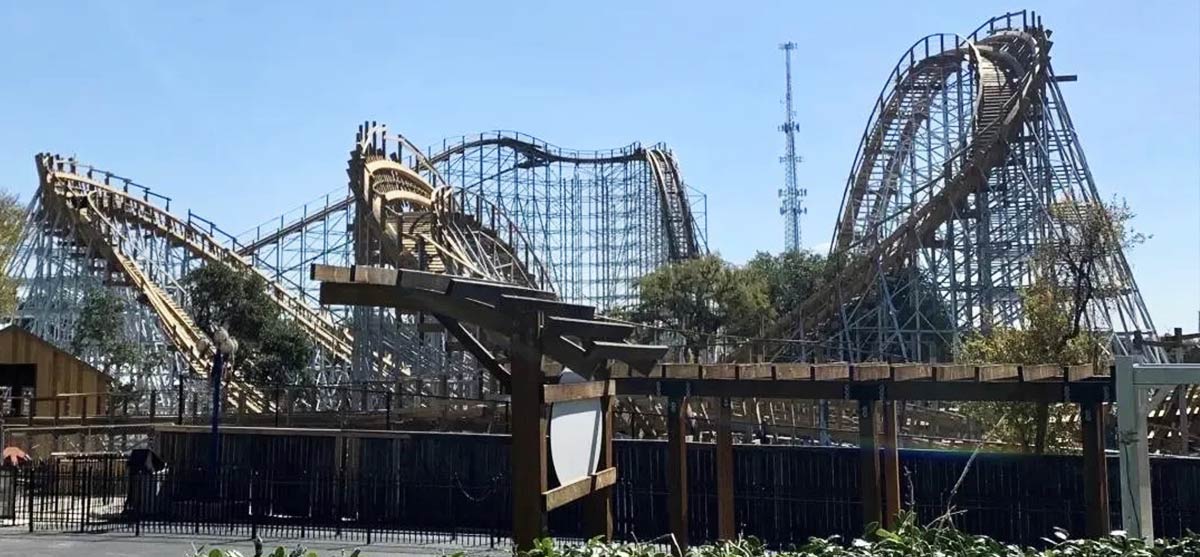
Safety Perspectives
- Wooden rides rely on constant manual checks and proactive part replacements.
- Steel coasters rely on sensors, computerised control systems, and precision engineering.
Both types comply with international safety standards such as EN 13814 and ASTM F24, provided maintenance is performed consistently.
Which One Should You Pick?
- Choose Wooden Roller Coasters if you want:
- Nostalgia and a classic “rumbling” ride
- Long service life with proper upkeep
- A family-friendly or vintage park theme
- Choose Steel Roller Coasters if you want:
- High speeds, inversions, and modern thrills
- Lower day-to-day maintenance workload
- Cutting-edge technology and design flexibility
For smaller parks, compact roller coasters like Roller Coasters Wild Mouse , Family Roller Coaster can also be a great fit.
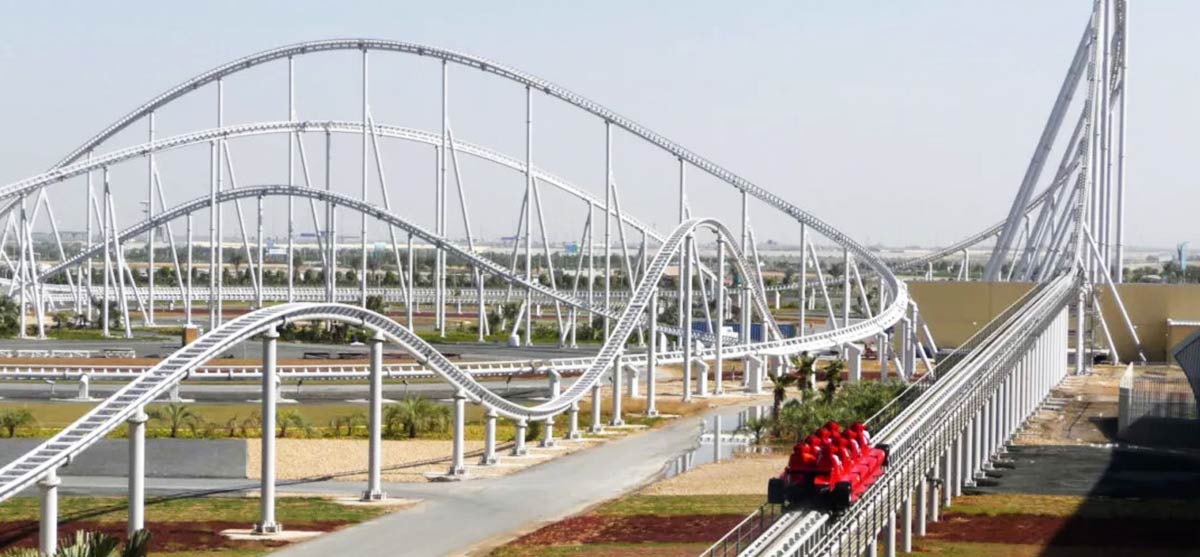
Conclusion
Le wooden roller coaster vs steel roller coaster debate comes down to heritage vs innovation, maintenance vs efficiency, tradition vs adrenaline.
Au Les balades en CARNEE, a professional roller coaster manufacturer with over 20 years of experience, we help parks choose the right solution—whether it’s a classic wooden build, a record-breaking steel design, or a custom hybrid.
Through the comparison of physical characteristics, ride experience, and operations, you now have a clearer picture of the differences between wooden roller coasters and steel roller coasters. So, which one would you pick for your park—or for your next ride?

